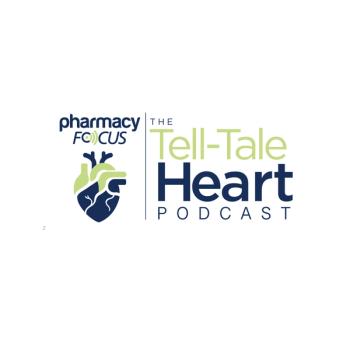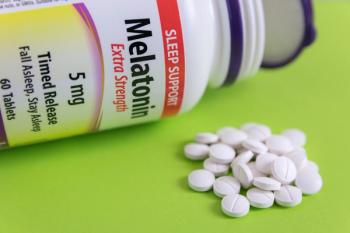
- June 2016 Women's Health
- Volume 82
- Issue 6
Cardio-Cousins: Heart Failure, Atrial Fibrillation, and Acute Coronary Syndrome
Cardiovascular disease accounts for 30% of all deaths worldwide, and it is not just 1 disease.
Cardiovascular disease (CVD) accounts for 30% of all deaths worldwide, and it is not just 1 disease.1 Its most common iterations are heart failure (HF), atrial fibrillation (AF), and acute coronary syndrome (ACS). Combined, the financial impact of these 3 conditions and other CVDs account for $1 of every $6 spent on health care. This translates to more than $320 billion in direct and indirect costs.2
HF, AF, and ACS are similar—but different. Their potential to cause substantial morbidity and mortality makes it critical to recognize the risk factors for these diseases (Table 1) and identify proper medications (Table 2). Reducing morbidity and mortality decreases hospitalization and emergency department (ED) visits.
HEART FAILURE: MECHANICAL ISSUES
Four million Americans have HF—a condition in which the heart is unable to circulate blood sufficient to meet all bodily needs.3 Symptoms vary among patients; however, breathlessness, fatigue, and edema are among the most common. HF usually develops when patients are in their mid-70s, and the risk increases drastically with age (Online Figure). HF’s potential causes include cardiac muscle failure, valve dysfunction, and increased fluid in the vasculature or pericardial area. For diagnosis, clinicians use echocardiography, magnetic resonance imaging, blood work (eg, increased plasma B-type natriuretic peptide), and cardiac catheterization.3
Pharmacists often identify these patients by their older age, dusky appearance, and long medication list; the average patient with HF takes 11 medications.4 Medications for these patients should include an angiotensin-converting enzyme (ACE) inhibitor, a beta-blocker (BB), and a diuretic—the cornerstone treatments of HF Pharmacist-provided education at discharge has been shown to improve patient outcomes, as nonadherence is a primary precipitating factor for acute, decompensated HF; therefore, adherence must be emphasized.5
ATRIAL FIBRILLATION: ELECTRICAL ISSUES
AF, which affects 2.2 to 5 million Americans, is a frequent or intermittent electrical aberration in the heart. It causes sporadic signaling and uncoordinated muscle contractions, which are recognized as rapid heartbeat and blood flow disruption.6 With several causes, AF usually develops pursuant to electrical activity emanating from pulmonary veins.7 Electrical signaling from the veins can cause spontaneous and ill-timed depolarization of atrial myocytes.
When patients with AF present, they often look tired and anxious. Patients often present with palpitations, chest pain, dyspnea, dizziness, and/or anxiety,6 and can frequently feel a bothersome heart flutter, which is concerning for some. Electrocardiography (ECG) can confirm whether a patient is experiencing AF. The main risk for patients suffering from AF is the potential for developing an atrial clot due to inconsistent blood flow. This clot could dislodge, causing a stroke.
Pharmacists can use the CHADS2 stroke risk stratification scheme to help prescribers decide whether to add anticoagulation therapy to a patient’s regimen.6 If anticoagulation is needed, pharmacists can choose specific agents based on comorbidities and other medications. Because warfarin is often used, drug interactions and therapeutic international normalized ratio levels should be monitored. BBs and antiarrhythmic drugs are also used to improve patient comfort and outcomes.
ACUTE CORONARY SYNDROME: PLUMBING ISSUES
Coronary heart disease causes 15% of all deaths worldwide and affects 13.7 million Americans. Its most life-threatening stage is ACS, blood flow blockage when a blood clot encounters an atherosclerotic area in the coronary artery.1,8 ACS can also be caused by the eruption of a plaque, which causes activation of blood platelets and clot formation.9 ACS is a medical emergency that often leads to hospital admission.
ACS syndromes include myocardial infarction (MI), ischemia, and unstable angina.8 Symptoms include chest pain, sweating, nausea, shortness of breath, and dizziness. Usually diagnosed in an ED, clinicians order an ECG to look for ST elevation or the presence of a Q wave. Blood work may reveal elevated cardiac biomarkers, such as cardiac troponins, monoclonal antibodies, or creatinine kinase.
Pharmacists can have a tremendous impact on patient care after discharge from a hospital. After an MI, patients receive a prescription for a BB, an ACE inhibitor, a statin, and aspirin (sometimes in combination with clopidogrel).10 This combination has been shown to decrease morbidity and mortality in these patients. Counseling patients on adherence is critical, as adherence rates could be as low as 40% to 75%.11
END NOTE
Understanding the impact of HF, AF, and ACS on our society is crucial. Identifying risk factors in patients is the responsibility of every health care provider. Geriatric patients should be screened and monitored closely because they are at greatest risk for CVD and its complications. Emphasizing lifestyle modifications is essential when counseling any patient.12 Patients should embrace these 5 risk-reducing behaviors: exercising, eating well, consuming alcohol in moderation, maintaining a healthy body weight, and not smoking. Even if patients adhere to only 2 of the recommendations, they can reduce their risk of CVD events by approximately 25%. Proper pharmacologic management and monitoring are also important for decreasing morbidity and mortality, and for reducing health care costs.
Ms. Wick is a visiting professor at the University of Connecticut School of Pharmacy.
References
- Zachariah JP, Vasan RS, D'Agostino RB. The burden of increasing worldwide cardiovascular disease. In: Fuster V, Walsh RA, Harrington RA, eds. Hurst's The Heart. 13th ed. New York, NY: McGraw-Hill Education; 2011.
- Costs & consequences. Million Hearts website. millionhearts.hhs.gov/learn-prevent/cost-consequences.html. Accessed February 20, 2016.
- Dar O, Cowie MR. The epidemiology and diagnosis of heart failure. In: Fuster V, Walsh RA, Harrington RA, eds. Hurst's The Heart. 13th ed. New York, NY: McGraw-Hill Education; 2011.
- Dunlay SM, Eveleth JM, Shah ND, McNallan SM, Roger VL. Medication adherence among community-dwelling patients with heart failure. Mayo Clin Proc. 2011;86(4):273-281. doi: 10.4065/mcp.2010.0732.
- Yancy CW, Jessup M, Bozkurt B, et al; the American College of Cardiology Foundation/American Heart Association Task Force on Practice Guidelines. 2013 ACCF/AHA guideline for the management of heart failure: a report of the American College of Cardiology Foundation/American Heart Association Task Force on Practice Guidelines. Circulation. 2013:128(16):e240-e327. doi: 10.1161/CIR.0b013e31829e8776.
- Prystowsky EN, Padanilam BJ, Waldo AL. Atrial fibrillation, atrial flutter, and atrial tachycardia. In: Fuster V, Walsh RA, Harrington RA, eds. Hurst's The Heart. 13th ed. New York, NY: McGraw-Hill Education; 2011.
- Chard M, Tabrizchi R. The role of pulmonary veins in atrial fibrillation: a complex yet simple story. Pharmacol Ther. 2009;124(2):207-218. doi: 10.1016/j.pharmthera.2009.07.002.
- Kim MC, Kini AS, Fuster V. Definitions of acute coronary syndromes. In: Fuster V, Walsh RA, Harrington RA, eds. Hurst's The Heart. 13th ed. New York, NY: McGraw-Hill Education; 2011
- Warnica JW. Acute coronary syndromes. Merck Manuals website. merckmanuals.com/professional/cardiovascular-disorders/coronary-artery-disease/acute-coronary-syndromes-(acs). Accessed February 22, 2016.
- O’Gara PT, Kushner FG, Ascheim DD, et al; the American College of Cardiology Foundation/American Heart Association Task Force on Practice Guidelines. 2013 ACCF/AHA guideline for the management of ST-Elevation myocardial infarction: a report of the American College of Cardiology Foundation/American Heart Association Task Force on Practice Guidelines.. Circulation. 2013:2013;127(4):e362-e425. doi: 10.1161/CIR.0b013e3182742cf6.
- Cheng K, Ingram N, Keenan J, Choudhury RP. Evidence of poor adherence to secondary prevention after acute coronary syndromes: possible remedies through the application of new technologies. Open Heart. 2015;2(1):e000166. doi:10.1136/openhrt-2014-000166.
- Rieckmann N, Clemow L, Whang W, Davidson KW. Behavioral cardiology treatment approaches to heart disease. In: Fuster V, Walsh RA, Harrington RA, eds. Hurst's The Heart. 13th ed. New York, NY: McGraw-Hill Education; 2011.
Articles in this issue
over 9 years ago
Improving Health Through Medication Accessover 9 years ago
Generic Therapeutic Substitution Could Curb Soaring Drug Costsover 9 years ago
Case Studies (June 2016)over 9 years ago
Generic Product News (June 2016)over 9 years ago
Pet Peeves (June 2016)over 9 years ago
Can You Read These Rxs? (June 2016)Newsletter
Stay informed on drug updates, treatment guidelines, and pharmacy practice trends—subscribe to Pharmacy Times for weekly clinical insights.


















































































































































































































